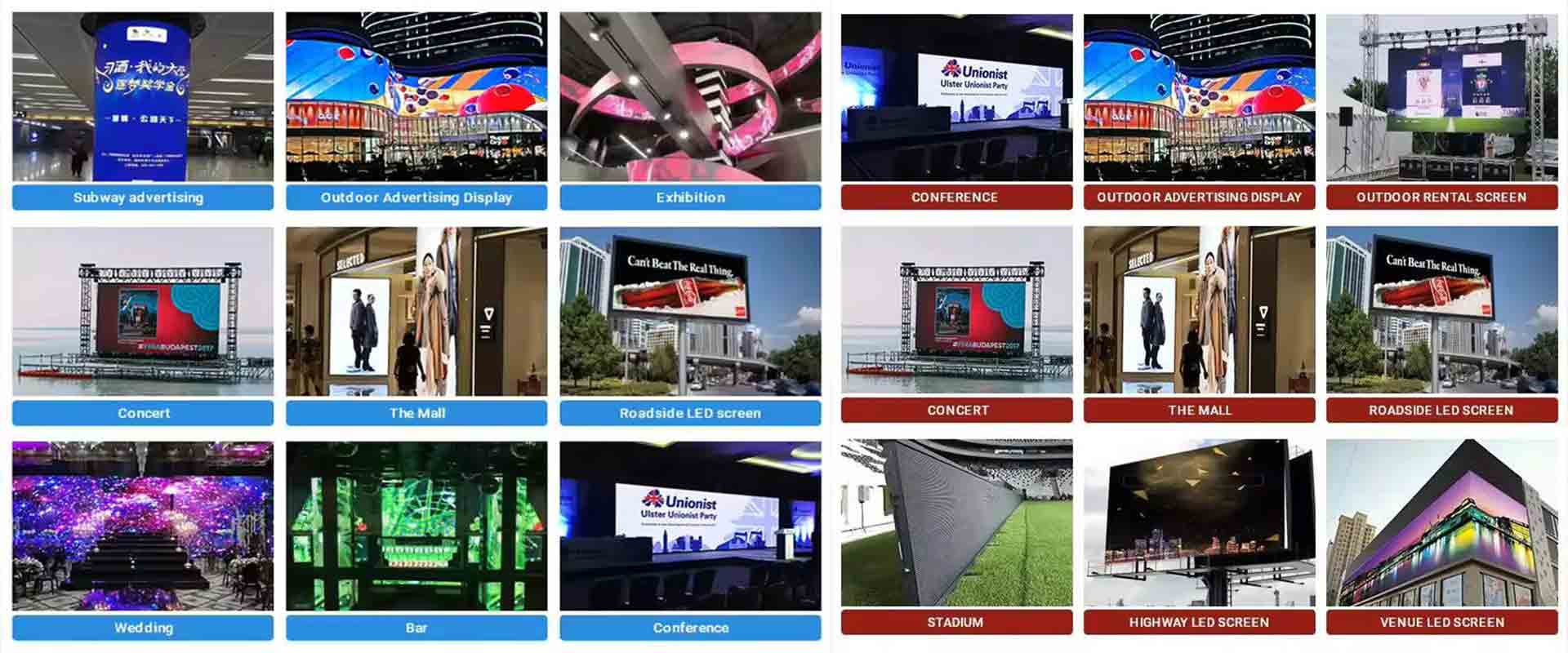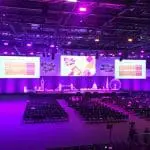
In today’s digital display industry, flicker in LED screens remains a critical issue affecting user experience and health. This comprehensive guide explores the underlying causes, technical bottlenecks, and innovative solutions to mitigate this phenomenon.
1. The Nature and Perception Mechanism of Flicker
1.1 Physical Definition
- Flicker Essence: LED brightness fluctuates periodically with the driving current, creating perceptible light-dark variations to the human eye.
- Key Parameters: Flicker frequency (Hz), modulation depth (%), and duty cycle.
1.2 Human Eye Perception Threshold
- Sensitive Frequency Range: Low frequencies (<200Hz) are easily noticeable, while high frequencies (>3kHz) approach “flicker-free” perception.
- Health Impact: Low-frequency flickering can cause eye strain, headaches, and even trigger epilepsy in photosensitive individuals.
2. Technical Causes of Flicker
2.1 Dimming Technology Selection
- PWM Dimming (Pulse Width Modulation): Adjusts brightness by rapidly switching LEDs on and off. Insufficient frequency (e.g., 100-500Hz in early low-cost solutions) results in significant flicker.
- DC Dimming (Direct Current Dimming): Regulates brightness by directly adjusting current intensity. While theoretically flicker-free, it suffers from color shift and gray-scale loss at low brightness levels.
2.2 Deficiencies in Drive Circuit Design
- Power Ripple: Inferior capacitors or filter circuits cause current fluctuations, exacerbating flicker when superimposed on PWM signals.
- Drive IC Response Delay: Synchronization errors during multi-channel scanning lead to uneven brightness across regions.
2.3 Hardware Material Limitations
- LED Chip Junction Capacitance: Affects transient current response speed, causing residual flicker at high frequencies due to capacitor charging and discharging delays.
- PCB Layout Interference: Long traces introduce inductive effects, disrupting signal stability.
2.4 Software Algorithm Compromises
- Low Refresh Rate (<3840Hz) Gray Scale Implementation: Reduces PWM frequency to extend color depth, sacrificing flicker performance.
3. Mainstream Solutions and Technological Innovations
3.1 High-Frequency PWM Dimming Optimization
- Technical Path: Increase PWM frequency to over 3kHz (e.g., Apple’s ProMotion technology uses 10kHz), surpassing human sensitivity thresholds.
- Challenges: Requires low-latency drive ICs and high-frequency PCB designs, increasing costs by 30%-50%.
3.2 Hybrid Dimming Technology
- DC Dimming (Low Brightness) + PWM Dimming (High Brightness): Switch strategies within the 10%-90% brightness range to balance flicker and color accuracy.
- Case Study: Huawei’s “Natural Light-like” technology uses algorithms to smoothly transition between dimming modes.
3.3 Hardware-Level Anti-Flicker Design
- Capacitor Compensation Circuits: Add MLCC capacitors to the drive module to suppress current ripple (ripple factor <5%).
- Distributed Power Architecture: Provide independent power supplies for each LED zone to reduce global current fluctuations.
3.4 Material and Packaging Innovation
- Low Junction Capacitance LED Chips: Use flip-chip structures to shorten current paths, reducing junction capacitance by 40%.
- Flexible Substrate Application: Replace FR4 with PI substrates to minimize parasitic inductance effects on high-frequency signals.
3.5 Software Algorithm Compensation
- Dynamic Frequency Adjustment (DFA): Dynamically adjust PWM frequency based on ambient brightness and content (e.g., enabling high frequency in gaming mode).
- Waveform Shaping Techniques: Optimize PWM waveform edge slopes to reduce modulation depth to <5% (e.g., Samsung’s “Eye Comfort Shield”).
4. Industry Pain Points and Future Trends
4.1 Cost vs. Performance Trade-offs
- High-Frequency PWM Solutions: Depend on imported drive ICs (e.g., Texas Instruments TPS92662). Domestic alternatives need breakthroughs in signal delay control technology.
4.2 Standardization Controversies
- IEEE 1789-2015 Standard: Recommends frequencies >1250Hz, but there is a discrepancy between vendor test data and user experience.
4.3 Emerging Technology Integration
- Micro LED Direct Drive Technology: Eliminates optical diffusion caused by packaging layers, theoretically achieving zero flicker.
- OLED-Inspired LED Drive Architecture: Borrows OLED pixel-level current control but needs to address LED current consistency issues.
5. User Scenarios and Selection Recommendations
5.1 Health-Sensitive Scenarios (e.g., Medical Displays)
- Preferred Solution: DC dimming + high-frequency PWM hybrid scheme, ensuring modulation depth <3%.
5.2 High-Performance Demand Scenarios (Gaming/Film)
- Recommended Approach: Use dynamic refresh rates (144Hz+) + waveform shaping algorithms to avoid motion blur and flicker overlap in high-speed scenes.
5.3 Low-Cost Scenarios (Public Information Displays)
- Optimization Focus: Improve power filtering circuits to achieve flicker frequency >2000Hz and modulation depth <8%.
6. Industry Data and Case Studies
6.1 Comparative Testing
- Example: A brand’s 4K LED screen (3840Hz PWM) vs. traditional screen (1200Hz) showed a reduction in flicker modulation depth from 15% to 3.5%, resulting in a 72% decrease in user fatigue complaints.
6.2 Patent Analysis
- BOE’s 2023 Patent: Publicly disclosed “GaN-based flicker-free LED backlight system,” enhancing response speed to nanosecond levels using gallium nitride devices.
This framework can be further enriched with specific product test data, academic papers (e.g., IEEE Photonics Journal studies on flicker), and vendor technical whitepapers. It is suitable for writing in-depth technical analyses or industry reports.













